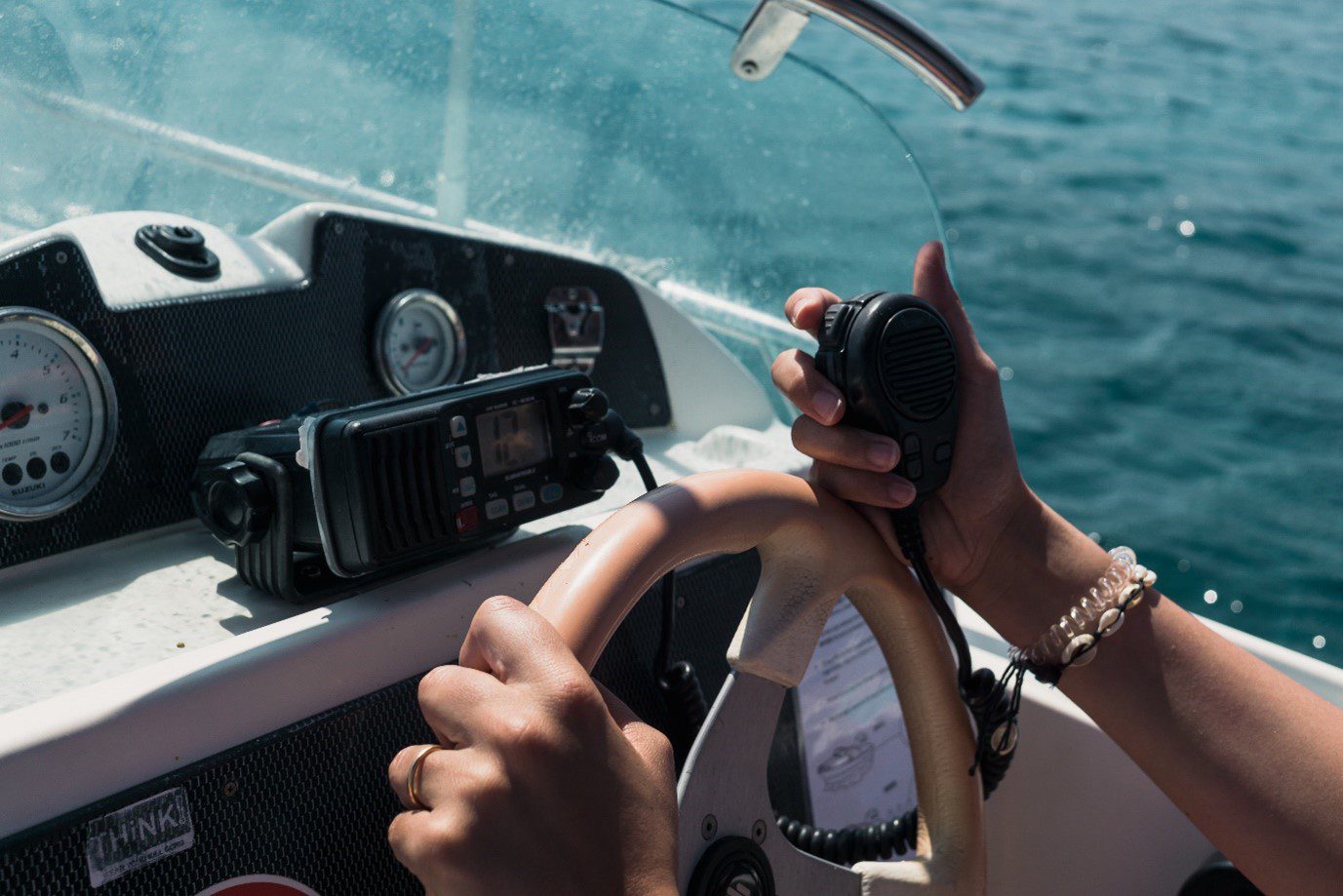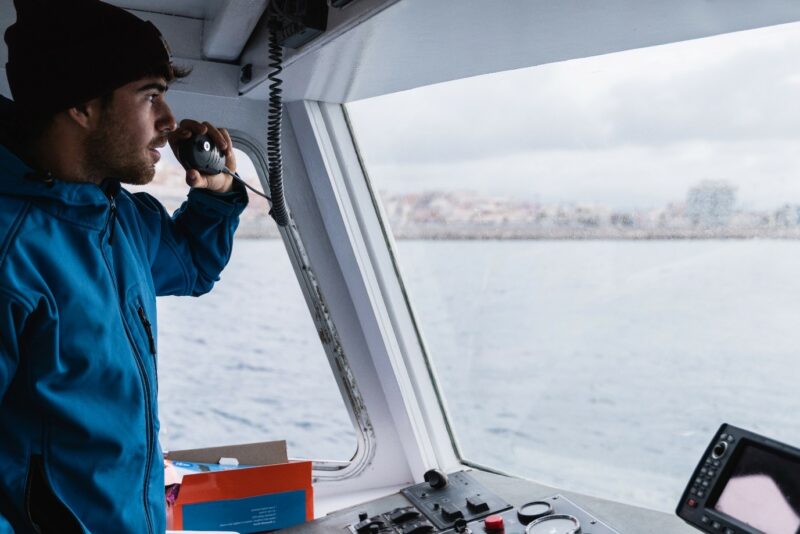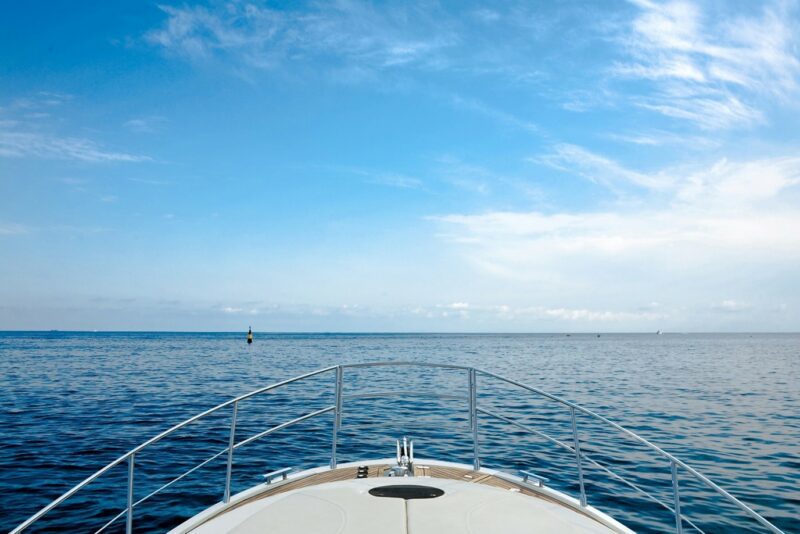


The sense of isolation once a vessel is out of sight of land and any other waterborne craft can be quite overwhelming, and sailors have relied on their ability to communicate with each other and the shore whenever things go wrong for many years. When out at sea, having the right radio communication equipment for the job is an important way of ensuring the safety of your crew, passengers, and the vessel itself.
Modern marine vessels have an incredible variety of communication devices to choose from, and here at Simpson Marine, we have been constantly amazed at the speed with which these technologies emerge and are incorporated. In this article, we will examine the non-negotiable emergency protocols of maritime communication, the devices required, and which are most commonly found in the superyacht world.
VERY HIGH FREQUENCY (VHF)
Very High Frequency (VHF) radios have been helping ocean-goers to communicate with each other since World War 1 when simple units used longwave frequencies to allow ships to communicate with each other and the shore. Although technology has moved on, the basic principles of VHF radios have changed little over the years. And therein lies its beauty and strength. If the fundamental principles are in place, VHF radios are almost unerringly reliable and remain the primary means of communication for vessels across the globe to this day. VHFs are typically used for:
While VHF radio has been tried and tested over many decades and can be relied upon in almost any situation, it does have a couple of significant limitations, namely:
Marine VHFs are often mounted onto a convenient surface on the bridge or sometimes come as handheld sets. If you are in the market for a new VHF radio system, consider those with extra benefits, such as an additional GPS receiver. Under normal circumstances, it will give the unit more flexibility and range while remaining as reliable as a traditional VHF radio if satellite communication is interrupted. One reason for the extreme longevity of this particular technology is that it is as simple as can be and does not require any external properties to function. Provided the two communicating units have the following, they can continue to send and receive messages indefinitely:
Alternative, more technologically advanced communication systems have much greater range and functionality and have forever changed the landscape of maritime communication. But VHF is unmatched in retaining a stable, strong signal, even in the most horrendous weather conditions, making it perfect for routine communications between sea and shore and during emergencies. It requires no infrastructure and cannot be scuppered by downed phone lines in storms. Whether you find yourself approaching the most sophisticated marina on Earth or the humblest port in the middle of nowhere, you can guarantee they operate a VHF radio, meaning you can communicate with them easily.

SINGLE SIDE BAND (SSB)
Single Side Band (SSB) radios are a little more complicated than their VHF brethren but offer a greater range of communication, typically anywhere from 80-160 km (50-100 miles). They use high-frequency (HF) waves that reflect off the Earth’s atmosphere and carry for much greater distances. However, SSB technology has largely been replaced by satellite phones and other technologies that have caught and surpassed it. Levels of emergency monitoring from the shore have waned and drastically reduced the practicality of the SSB system.
SATELLITE PHONES
Marine satellite phones are an irreplaceable piece of emergency equipment that no modern yacht should lack. We are no strangers to the uses of satellites for communication, with the world growing smaller and more accessible as technology has improved. Maritime uses have also come on in leaps and bounds; it is now possible to contact emergency services and report a problem from almost any spot on the ocean, no matter how remote.
EMERGENCY PROTOCOLS
You must follow the established procedures in an emergency to ensure you receive a prompt response. Standard phrases and responses also help reduce the potential for miscommunication, especially when different languages are at play. There is a fixed procedure when sending out distress calls, but the most important thing is to tune into the emergency channel (16) and seek help. The phrases needed all relate to the safety of you and your crew and are as follows:
Those phrases will get the immediate attention of anybody within range and start the process of providing aid. If you are unsure whether your predicament will become life-threatening but want to seek help regardless, Pan pan is the phrase to use. State your exact situation as calmly and clearly as possible and respond to any questions accordingly.

CONTACT US
If you want to learn more about safety on board, yachting protocols, and maritime communication, contact Simpson Marine. We will gladly discuss any aspect of yachting and walk you through our incredible range of vessels in fine detail if requested.
23rd October 2020